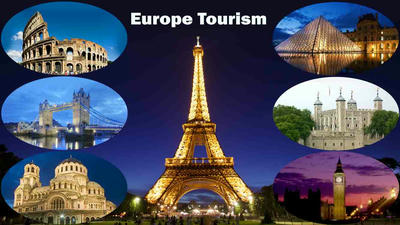
Planning a multi-country European adventure can be one of the most exciting and fulfilling experiences of your life. Europe is known for its rich history, diverse cultures, stunning landscapes, and vibrant cities, making it the perfect destination for travelers seeking to explore multiple countries in one trip.
Understanding Your Travel Goals
Before you dive into the details of planning your trip, it’s essential to understand your travel goals and what you want to achieve during your adventure. Here are some key questions to consider:
-
What are your interests? Are you more inclined toward historical sites, natural beauty, culinary experiences, or art and culture? Identifying your interests will help you select the right countries and cities to include in your itinerary.
-
How much time do you have? The duration of your adventure will significantly influence the number of countries you can visit. A longer trip allows for more exploration, while a shorter trip may necessitate careful selection.
-
What is your budget? Europe can be both expensive and budget-friendly, depending on your choices. Setting a realistic budget will guide your planning process and help you make informed decisions.
Choosing Your Destinations
With your travel goals in mind, begin selecting the countries and cities you want to visit. Here are some popular multi-country routes and suggestions:
1. Classic Western Europe Route
- Countries: France, Belgium, Netherlands, Germany
- Highlights: Experience the romance of Paris, immerse yourself in the art scene in Amsterdam, indulge in Belgian chocolates, and explore historical sites in Berlin.
2. Southern Europe Itinerary
- Countries: Italy, Spain, Greece, Portugal
- Highlights: Savor authentic Italian cuisine in Rome, relax on the beaches of Barcelona, explore ancient ruins in Athens, and tour the stunning coastal towns of Portugal.
3. Eastern Europe Exploration
- Countries: Czech Republic, Poland, Hungary, Austria
- Highlights: Discover the stunning architecture of Prague, delve into the history of Krakow, enjoy the thermal baths in Budapest, and visit the picturesque city of Vienna.
4. Northern Europe Adventure
- Countries: Sweden, Denmark, Norway, Finland
- Highlights: Experience the charming streets of Copenhagen, take in the natural beauty of Norway's fjords, and explore the unique culture of Sweden and Finland.
5. The Balkans Road Trip
- Countries: Croatia, Montenegro, Serbia, Slovenia
- Highlights: Wander through the historic streets of Dubrovnik, revel in the stunning coastal views of Montenegro, and explore the beautiful lakes of Slovenia.
Crafting Your Itinerary
Once you have chosen your destinations, it’s time to craft a detailed itinerary. Consider the following elements:
1. Duration in Each Destination
Decide how many days you want to spend in each city. A common approach is to allocate a minimum of three days for major cities to allow for sightseeing, relaxation, and immersion in the local culture.
2. Transportation Between Countries
Europe has a well-connected transportation network, making it easier to travel between countries. Here are some options:
- Trains: Europe boasts an extensive train network that is convenient and scenic. Consider getting a Eurail Pass for unlimited train travel on select routes.
- Flights: Budget airlines like Ryanair and EasyJet offer affordable flights between major cities. Check for deals in advance to save on costs.
- Buses: Long-distance buses can be a budget-friendly option, with companies like FlixBus offering routes across Europe.
- Car Rentals: Renting a car gives you the freedom to explore off-the-beaten-path destinations but be aware of tolls and parking fees.
3. Accommodation Choices
As you finalize your itinerary, research accommodation options that fit your budget and preferences. Consider these options:
- Hotels: Look for family-owned hotels or boutique hotels for a more personalized experience.
- Hostels: Perfect for budget travelers and solo adventurers, hostels often provide social opportunities and shared experiences.
- Vacation Rentals: Platforms like Airbnb and Vrbo offer rental options that can accommodate larger groups and families.
- Guesthouses: Experience local hospitality by staying in guesthouses that often provide breakfast and personalized recommendations.
4. Must-See Attractions and Activities
Make a list of must-see sights and activities for each destination. Research popular attractions, local experiences, and cultural events that pique your interest.

Budgeting for Your Trip
A multi-country adventure in Europe requires careful budgeting to ensure a memorable experience without breaking the bank. Consider the following expenses:
1. Transportation Costs
- Inter-country Travel: Factor in the cost of trains, flights, buses, or car rentals when creating your budget.
- Local Transportation: Allocate funds for local transportation such as subways, trams, or taxis within cities.
2. Accommodation Costs
- Research accommodation costs for each destination based on your chosen travel dates and book in advance to secure the best rates.
3. Daily Expenses
- Meals: Allocate a daily budget for meals. Consider local markets and casual eateries for affordable dining options.
- Sightseeing: Budget for entrance fees to museums, attractions, and cultural experiences you intend to explore.
4. Travel Insurance
- Invest in comprehensive travel insurance that covers medical emergencies, trip cancellations, and lost belongings.
Practical Travel Tips
1. Learn Basic Phrases
While English is widely spoken in many European countries, learning a few basic phrases in the local language can enhance your interactions and show respect for the culture.
2. Embrace Local Culture
Take the time to immerse yourself in each destination's culture. Attend local events, try traditional cuisine, and interact with residents to enrich your travel experience.
3. Stay Connected
Having access to mobile data or Wi-Fi is crucial for navigation and communication. Consider purchasing a local SIM card or an international roaming plan.
4. Stay Flexible
While having a plan is essential, flexibility allows you to take advantage of unexpected opportunities or changes in circumstances. Be open to altering your itinerary if a new experience arises.
5. Pack Smart
Pack light and choose versatile clothing that can be layered and mixed. Consider the weather conditions of each destination and pack accordingly.
6. Keep Important Documents Secure
Store important documents such as your passport, travel insurance, and booking confirmations in a secure location. Consider carrying copies and storing them electronically as backups.
Conclusion
Planning a multi-country European adventure is an exhilarating journey that promises unforgettable experiences. By taking the time to outline your travel goals, choose your destinations thoughtfully, craft a detailed itinerary, budget appropriately, and embrace the local culture, you will set yourself up for a memorable exploration of Europe.
Whether you seek historical landmarks, vibrant cities, picturesque landscapes, or culinary delights, Europe offers a wealth of diverse experiences. So pack your bags, and embark on an adventure of a lifetime, exploring the charming, complex, and captivating corners of this beautiful continent.



